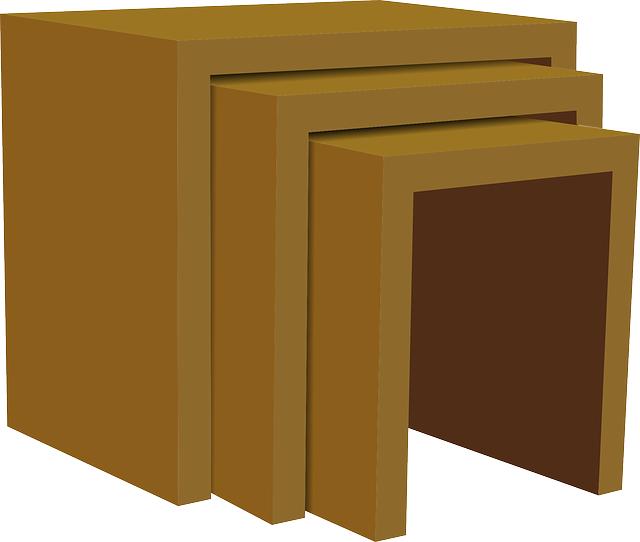Imagine stepping into a bustling café filled with the aroma of fresh coffee and the soft background hum of conversation, where every clink of a cup and flutter of a page seems to sync in unison. Just as this ambiance has a rhythm, so does music, woven together by a structure we often take for granted: bar lines. These simple vertical marks serve as the invisible thread stitching notes into cohesive phrases, guiding both the musicians and the listeners through the intricate tapestry of sound. But what exactly are bar lines, and how do they shape our understanding of musical time? In this article, we’ll dive deep into the world of bar lines, exploring their purpose, variations, and ultimate significance in charting the pulse of music. Whether you’re a budding musician or a curious listener, unraveling the mystery of bar lines will deepen your appreciation of the rhythm that drives the melodies you love. So, let’s embark on this journey to decode the structure of musical time!
Exploring the Anatomy of Bar Lines in Musical Notation
Bar lines are the unsung heroes in the world of musical notation, acting as the invisible framework that holds our favorite melodies together. Essentially, they are vertical lines that divide a piece of music into measures, allowing musicians to read rhythm and timing with clarity. Think of them as natural pauses, like a breath in a conversation, helping us grasp the flow of the music. Here are a few key details about bar lines:
- Basic Bar Line: The standard vertical line that indicates the end of a measure.
- Double Bar Line: This consists of two lines and indicates a significant change, like the end of a section or a shift in musical ideas.
- Final Bar Line: A thicker line that signifies the end of the piece, almost like a period at the end of a sentence.
- Repeats: The repeat bar line looks like two thick lines with two dots. It tells players to go back and play a specific section again, much like flipping back a page in a book.
Understanding how these lines function allows musicians to navigate through complex compositions with ease. Consider this: just as roads guide drivers safely to their destinations, bar lines direct musicians through the sonic landscape. Now, take a look at how these lines are visually represented:
| Type of Bar Line | Symbol | Purpose |
|---|---|---|
| Basic Bar Line | | | Ends a measure |
| Double Bar Line | || | Signifies a section change |
| Final Bar Line | || | Marks the piece’s end |
| Repeat Bar Line | || : | Indicates repeat of a section |
The Role of Bar Lines in Defining Rhythm and Tempo

Bar lines serve as the backbone of a musical piece, acting like traffic signals on a busy road. Without them, musicians would be cruising through a chaotic landscape, unsure of where to go or how to keep time. Essentially, these lines divide the music into manageable sections, making it easier to follow rhythms. Consider how a good book uses chapters to help you digest the story; bar lines do the same for musical notes. They provide clear markers that denote the start and end of each measure, allowing musicians to maintain a steady pulse and create a cohesive flow.
The placement of bar lines also plays a vital role in establishing tempo, dictating how fast or slow a piece should be played. For instance, a faster tempo often utilizes shorter measures, creating a sense of urgency, while longer measures can evoke a more relaxed, flowing feel. This rhythmic framework allows for various musical styles, from the lilt of a waltz to the driving force of a march. Here’s a quick overview of how bar lines can influence rhythm and tempo:
| Measure Type | Effect on Rhythm | Common Tempo |
|---|---|---|
| Simple | Clear and straightforward | Moderate to fast |
| Compound | Rich and intricate | Slow to moderate |
| Irregular | Often unpredictable | Varied |
Decoding Time Signatures: How Bar Lines Shape Musical Phrases

When we look at sheet music, those vertical lines separating the staff into sections aren’t just there for decoration; they’re pivotal in how we experience rhythm and flow in music. These lines, known as bar lines, demarcate measures that serve as containers for beats. But here’s where it gets fascinating: the specifications of these measures, encoded in time signatures like 4/4 or 3/4, determine how many beats fit into each measure, offering musicians a kind of roadmap. Imagine each measure as a little room within a house, with the time signature dictating how many chairs (or beats) can fit comfortably inside. Musicians use this framework to organize their phrases, navigating through them in a structured manner that enhances their performance and the audience’s comprehension.
When time signatures shift—like moving from 4/4 to 6/8—it’s akin to changing the mood in a conversation; the tempo may become light and lively or more reflective and drawn out. This rhythmic flexibility allows composers to convey different emotions and styles, thereby enriching the listening experience. As musicians transition between measures, they explore various grooves and feels within those confined spaces. Think of it as a dance, where each step follows the rhythm set by the bar lines, guiding the dancers (or musicians) in a synchronized display of artistry. Visualizing this concept enhances our appreciation of not just the notes, but the very structure that holds them together, creating a seamless journey through sound.
Practical Tips for Composing and Reading Music with Bar Lines

When diving into the world of music, understanding how to effectively compose and read with bar lines can really elevate your skills. Think about bar lines as the fence posts that define the structure of a musical field—they provide boundaries within which melodies and harmonies can flourish. To make the most of your musical experience, consider these practical tips:
- Count It Out: Always keep a steady beat in mind. Whether you’re tapping your foot or using a metronome, maintaining a consistent tempo will help you stay grounded within the bars.
- Segment Your Practice: When you’re learning a new piece, break it down into smaller sections. Focus on 2-4 bars at a time before piecing everything together.
- Visualize the Structure: As you read music, use colored pencils or highlighters to mark different sections. This will help you see how phrases relate to the bar lines.
- Listen Actively: Play along with recordings of the music you’re studying. Pay attention to how the performers interact with the bar lines; it’s often a cue for dynamics and phrasing.
Reading music is often about the balance between rhythm and melody, and mastering bar lines is crucial for maintaining that balance. Here’s a simple visualization of how common time signatures group bar lines:
| Time Signature | Bars per Measure | Common Feel |
|---|---|---|
| 4/4 | 4 | Even, march-like |
| 3/4 | 3 | Waltz-like, lilting |
| 6/8 | 2 | Rolling, compound |
These insights not only enhance your comprehension of timing but also allow you to express your creativity within defined boundaries. Think of bar lines as street signs in the city of music—they guide you where to go but don’t restrain your journey!
To Conclude
As we wrap up our exploration of bar lines and the fundamental structure they provide in the world of music, it’s clear that these seemingly simple vertical lines play a crucial role in shaping our musical landscape. They’re more than just demarcations; they’re the guides that navigate the rhythmic flow, helping both musicians and listeners grasp the underlying pulse of a piece. Think of bar lines as the traffic lights of musical time—those moments where we pause, breathe, and prepare to venture into the next melodic phrase.
So, whether you’re an aspiring composer, an enthusiastic musician, or just someone who enjoys a good tune, embracing the nuances of bar lines can deepen your appreciation for the art of music. The next time you find yourself tapping along to your favorite song, take a moment to acknowledge the structure that makes it all possible. After all, every great symphony relies on a solid foundation, and in the case of music, that foundation often begins right at the bar line. Keep listening, keep exploring, and who knows? You might just find yourself inspired to create your own rhythmic masterpiece!



